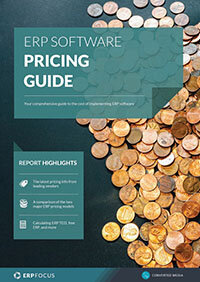4 steps to purchasing ERP on a budget
ERP projects primarily driven by a budget may appear to be a bit of an outlier, since any attempt to integrate ERP within an enterprise typically attracts hosts of known and unknown costs extending from the front to the back of a business. That said, there are a number of ways to limit and/or marginalize cost concerns when purchasing ERP.
1. Only consider cloud-based variants
This decision is really defined by reduced upfront cost considerations. If one establishes price as a gating issue, this option is really the only legitimate way to go. Today’s cloud-based systems intrinsically offset costs across-the-board, particularly in the case of necessary expansions associated with legacy-based system infrastructures that are usually cost-intensive. Consequently, in the case of purchasing cloud ERP, the enterprise saves money in the short-term on the front-end and back end.
2. Only consider subscription-based purchase options
Another way to skin the budgetary cat, as it were, is to research only subscription-based ERP pricing options. This value is really driven by the pricing platforms flexibility; since if a small-business is attempting to move up from the ‘small’ to ‘mid’ category in terms of establishing a larger business footprint, it is likely that this company may also be quite sensitive to its system budgets. Purchasing ERP on a subscription option allows for better management control when defining the system growth sequence based on when and how much investment a company can absorb.
3. Avoid ‘one system integrates all modules’ variants
The aforementioned ERP systems tend to be oriented to the lower cost scale and, therefore perhaps appear to be the better buy for budget shoppers. However, in the case of ERP specifically, they generally create higher costs downstream than more iterative variants, since sudden business growth can easily overrun processing and operational requirements much faster than smaller systems can deal with.
4. Avoid version 1 of anything, even if it’s cheaper
This concern is critical to nearly any system purchase, but is particularly critical when it comes to ERP solutions due to their intrinsic ability to directly impact enterprise operations. The practical issue here is simple; many new systems harbor intrinsic glitches usually triggered by what the software developer ‘thinks’ versus what he/she ‘learns’ once a commercial product hits the shelves.
Recommended reading: Exclusive 50-step ERP selection checklist
Most v1.0 systems are delivered with a hidden “beta” tag, meaning a small percentage of failure once that system is available to the public is expected. Sometimes these issues are picked up and fixed by version patches (often driven by security concerns), and some glitches are operational that can be offset by support contracts, but all of them end up costing the end user time and/or money that any enterprise is usually loath to deal with when purchasing ERP.
Free white paper

ERP Software Pricing Guide
Get the latest pricing information on over 80 popular ERP systems, and learn how to budget for your ERP project in our free guide

Related articles
-

Funding an ERP: how and why?
What funding is available for ERP including loans and grants
-

Secret KPI: Why Your ERP Implementation Team Matters More Than Software
Learn how Godlan ensures successful ERP implementation for manufacturers with proven strategies &...
-

How much does ERP cost? (Free ERP cost and budget guide)
How much does an ERP system cost in 2025? Everything you need to make an ERP software budget

